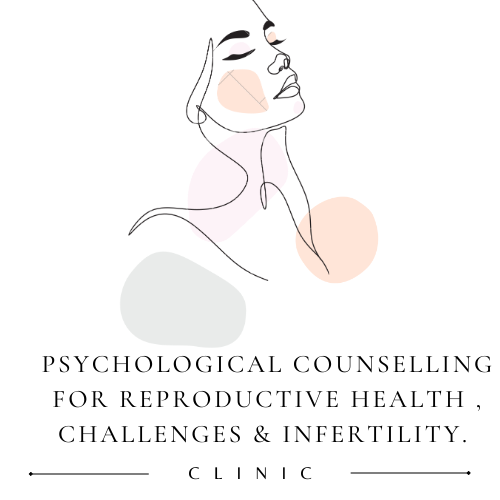
Menstrual Care Issues & Mental Health
Every month, countless women worldwide experience the physical and emotional shifts associated with their menstrual cycle. For most, these changes are manageable, but for others, they can be debilitating, leading to significant disruptions in daily life.
A menstrual disorder is a condition that affects the normal menstrual cycle, causing pain, unusually heavy or light bleeding, delayed menarche, or missed periods. Some common menstrual disorders include:

- Dysmenorrhea: Severe, frequent cramping during menstruation
- Menorrhagia: Significantly heavier periods
- Amenorrhea: Absence of menstruation
- Oligomenorrhea: Infrequent menstruation, occurring more than 35 days apart
- Hypomenorrhea: Light menstruation
- Fibroids: Noncancerous uterine tumors, contributing to menstrual issues.
- Premenstrual exacerbation (PME) : Premenstrual exacerbation of psychiatric symptoms (worsening of mental health conditions just prior to a woman’s period), is not a new term or idea. of psychiatric symptoms (worsening of mental health conditions just prior to a woman’s period), is not a new term or idea.
- Premenstrual syndrome (PMS): Physical and emotional discomfort prior to menstruation
- Premenstrual dysphonic disorder (PMDD): Severe physical and emotional discomfort prior to menstruation. One such condition that has garnered attention in recent years is Premenstrual Dysphoric Disorder (PMDD), a severe form of premenstrual syndrome (PMS). However, the correlation between menstrual disorders and mental health extends beyond PMDD, reaching into other mood disorders and even suicide risk.

PCRH, Menstrual Cycle & Mental Health: An Unexplored Territory
At PCRH, we as a team, focus on prospective monitoring and multi-specialist management of psychiatric symptoms in patients with menstrual cycles. Such an approach can be a useful tool for managing psychiatric illness across the menstrual cycle.
It is well-known that the hormonal fluctuations during the menstrual cycle can cause physical symptoms. However, these hormonal changes can also impact mental health, causing mood swings and exacerbating existing psychiatric conditions, a phenomenon known as premenstrual exacerbation (PME).
It has been found that approximately 60% of women with major depressive disorder or bipolar disorder report menstrual cycle-related mood changes. In women with schizophrenia, premenstrual exacerbation of psychotic symptoms, like hallucinations, has been reported.
Researchers examined whether suicidal thoughts worsen during the luteal phase of the menstrual cycle. Several studies have demonstrated a worsening of suicidal thoughts just prior to the menstrual cycle. The researchers also found that specific depressive symptoms such as hopelessness, rejection sensitivity, and perceived burdensomeness, were predictive of suicidal planning.

Special Clinic : PME, PMS & PMDD Spectrum Clinic
Premenstrual exacerbation (PME)
Premenstrual exacerbation (PME) of psychiatric symptoms (worsening of mental health conditions just prior to a woman’s period), is not a new term or idea. Yet PME of psychiatric symptoms such as depression, mania, and psychosis, to name a few, has been understudied compared to other illnesses related to the menstrual cycle. The work that has been done surrounding this idea has mostly asked women to report past experience of worsening psychiatric symptoms around their menstrual cycle. This is problematic in research because it can be difficult to remember specifics of symptom changes.
Premenstrual Syndrome (PMS)
PMS is a combination of physical and emotional symptoms that arise in the week or two before the menstrual period.
Premenstrual Dysphoric Disorder (PMDD)
PMDD is a more severe form of PMS, characterized by symptoms such as severe depression, irritability, and tension, that impact a person's work or social functioning.
Peri-menopausal worsening of PMS/PMDD
During the perimenopausal transition, a combination of PMS and menopausal symptoms or no symptoms at all may be experienced. Symptoms of perimenopausal depression are “emotional flatness/ oversensitivity, inability to cope, cognitive fluctuations, irritability, loneliness, social isolation, tearfulness, decreased energy, easy fatiguability, and failure to enjoy” normal activities and relationships.

PCRH:Diagnosis and Treatment of PME, PMS & PMDD
The diagnosis of PME, PMS & PMDD involves a complete medical history and physical examination. Healthcare providers may also prescribe some investigations and ask patients to keep a journal of their symptoms for several months.
Treatment for all of this may include multiple changes in diet, regular exercise, lifestyle modifications, emotional regulation and stress management, psychosomatic therapies, vitamin supplements, anti-inflammatory medicines, psychotropics and other pills.
It is important to remember that the severity of symptoms can increase over time and continue until menopause, necessitating treatment for an extended period.
Expert Talks By Dr Ansha Patel
Client Feedbacks
Great center for counseling
Very informative session. The symptoms and the ways to manage it were very useful. Was able to know many important aspects of women's physical and psychological health. The case was very helpful in understanding about the symptoms.
Dr Ansha Patel is highly recommended for her knowledge, behavior and competence. She's very understanding and knows the minor , major aspects of mental health issues. N always there at hospital and phone in times any need.
FAQ
The hormonal fluctuations associated with the menstrual cycle can have a significant impact on a woman's mood and emotional well-being. During the premenstrual phase, changes in estrogen, progesterone, and other hormones can contribute to feelings of irritability, anxiety, depression, and mood swings.
Remember, you are not alone in your experience with PMS /PME/ PMDD. By understanding the connections and seeking appropriate support, you can take steps to manage your symptoms and maintain a healthy, balanced lifestyle.
Resources
Kuehner, C., & Nayman, S. (2021). Premenstrual exacerbations of mood disorders: Findings and knowledge gaps. Current Psychiatry Reports, 23(11).
https://doi.org/10.1007/s11920-021-01286-0
Hsiao, M., Hsiao, C., & Lui, C. (2004). Premenstrual symptoms and premenstrual exacerbation in patients with psychiatric disorders. Psychiatry and Clinical Neurosciences, 58(2), 186-190.
https://doi.org/10.1111/j.1440-1819.2003.01215.x
American Journal of Psychiatry, What Predicts Acute Changes in Suicidal Ideation and planning? A Longitudinal Study of Symptom Mediators and the Role of the Menstrual Cycle in Female Psychiatric Outpatients with Suicidality,
https://ajp.psychiatryonline.org/doi/10.1176/appi.ajp.20230303
Pearlstein, T., & Steiner, M. (2008). Premenstrual dysphoric disorder: burden of illness and treatment update. Journal of psychiatry & neuroscience: JPN, 33(4), 291-301.
Johns Hopkins Medicine,
https://www.hopkinsmedicine.org/health/conditions-and-diseases/premenstrual-dysphoric-disorder-pmdd
UNC School of Medicine,
https://www.med.unc.edu/psych/center-for-womens-mood-disorders/menstrually-related-mood-disorders/
Johns Hopkins Medicine
https://www.hopkinsmedicine.org/health/conditions-and-diseases/premenstrual-dysphoric-disorder-pmdd
Cleveland Clinic,
https://my.clevelandclinic.org/health/diseases/17686-premenstrual-dysphoric-disorder-pmdd
